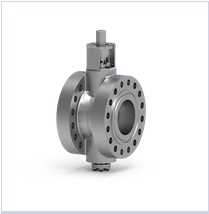Question
-
Importance of maintaining specific range of temperature to Hot HP separator in hydrotreating units?
Relation of H2 gas and salts ie: Ammonium Bisulfide and Ammonium chloride solubility with temperature of the gas/liquid mixture upstream of Hot HP separator?
Jan-2023
Answers
-
Eric Lin, Norton Engineering Consultants Inc., elin@nortonengr.com
Generally speaking, the lower temperature limit of operating the Hot HP Separator (HHPS) is set by having a healthy margin above the ammonium chloride (NH4Cl) sublimation point. As injection water is typically located well downstream of the HHPS vapor to address corrosion caused by ammonium bisulfide (NH4HS), the only operational lever to address chloride stress corrosion cracking (CSCC) in the piping until water injection is temperature alone.
The upper temperature limit of the HHPS strikes a balance between sharpening the product cutpoints in the fractionation section and how much naphtha-range material is allowed to be in recirculation in the recycle gas loop. Operating well above the HHPS temperature recommended by the Licensor can potentially burden the recycle gas compressor with higher MW gas than anticipated due to the increased burden on the downstream high pressure air cooler.
The HHPS temperature is usually good enough to produce high pressure steam or preheat fractionator feed before the reactor effluent enters the HHPS.
Jan-2023
-
Marcio Wagner da Silva, Petrobras, marciows@petrobras.com.br
This is a key issue in the hydrotreating units, especially those units processing heavier feedstocks which tends to present higher contaminants content like sulphur and nitrogen that will produce the NH4HS (Ammonium Bisulphide) and NH4Cl (Ammonium Chloride) under specific conditions.
For hydrotreating units processing lighter feeds, like naphtha, the hydrotreated stream tends to present physical properties very different from the water and a single separation vessel can be applied. For heavier feeds like LCO (Light Cycle Oil), and Gasoils two separating vessels are applied once the hydrotreated feed present physical properties closer with the water leading to a harder separation process which demands higher interface area, in these cases are applied a High Pressure (HP) separation vessel (Usually a vertical vessel) where it's separated the recycle gas (H2, H2S, and NH3) from the liquid phase which concentrates water, hydrocarbons and dissolved H2S and NH3. The liquid phase is fed to a Low Pressure (LP) separation vessel (Usually a horizontal vessel), as aforementioned this is the common configuration for high severity hydrotreating units.
In both cases the range of operating temperature aims to avoid the deposition of ammonium salts which tends to produce precipitations and corrosion which can reduce the lifetime of the process unit and led to accidents, generally the salt precipitation and the corrosion process is controlled through water injection in the post reaction section under temperatures above the precipitation temperature of the salts. In the literature is available some precipitation charts for the Ammonium Bisulphide (NH4HS) and NH4Cl (Ammonium Chloride). The Ammonium Bisulphide can precipitate in temperatures close to 140 oC while the Ammonium Chloride precipitate close to 250 oC, this is especially concerning for processing units with high chloride concentration in the feedstocks once the water injection needs to be made at higher temperature leading the necessity of the use of noblest metallurgy in the processing unit aiming to minimize the corrosion process. It's fundamental a deep characterization of the feedstock of the hydrotreatiing unit in order to measure the expected concentration of Ammonium Bisulphide and Ammonium Chloride based on the concentration of Sulphur, Nitrogen and Chloride in the feed, with this information it's possible to design an adequate water injection system to prevent the salt deposition and corrosion process.
Jan-2023

















